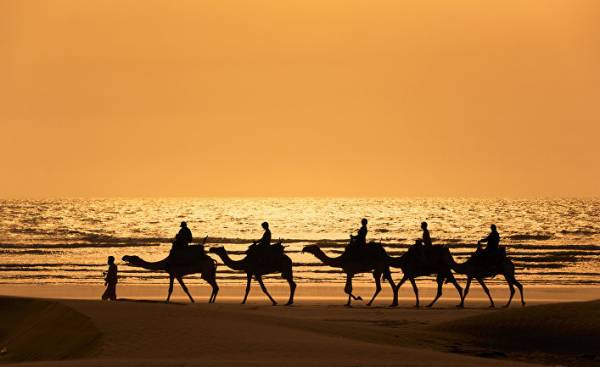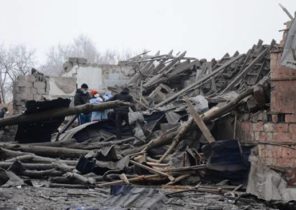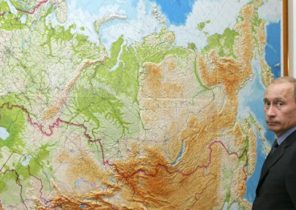
When topsy had set foot on American soil, it was no longer hold. Bactrian camel screamed, jumped around, kicking her hind legs. She lay in the dust and tore out of the ground fixing pegs. “The animals were so excited that it was impossible to keep in check, wrote Henry Wayne (Henry Wayne), leader of the expedition. — They showed a great joy to be back on solid ground.”
Three stormy months, from February to may, 1856, lasted the journey on the ship from the Mediterranean into the Texas port of Indianola for 35 camels. Their transport ship “USS Supply” was equipped with glass portholes, hatches for fresh air, mounts for tying animals and tons of hay. Because it was, as they put some, about the future of the U.S. army.
Now a new army of two-humped and one-humped camels were in the country. “Camel corps” was to act in the deserts of the American southwest — as transport and for combat use against the Indians, and to protect the external borders of the USA. For decades, some military felt that camels are much better adapted for dry and hot climate than horses, mules and donkeys.
U.S. Secretary of war Jefferson Davis (Jefferson Davis) eventually pushed that idea. In 1855 Congress appropriated $ 30 thousand dollars for an experiment with camels. So began one of the strangest episodes in American military history.
Life is topsy in the next decade is a bit like the hero of the movie Forrest Gump, which the accident eventually brought good luck in life. Crazy topsy career covers positions of a beast of burden and a fighter against Indians, circus attraction, the Hollywood props and the post camel. The camel helped in the construction of the highway of all highways, route 66, and in 20-30 years it has become the main attraction of the zoo in Los Angeles.
Camels do not need abundant food
Few months ship “USS Supply” cruised in the Mediterranean and purchased a camel in Tunisia, Egypt, Malta and Turkey. Expedition leader Wayne visited zoos in Paris and London, talked with experts and researchers, and searched for the camel drivers. During a short visit to the Crimea, he asked British officers about their experiences of interaction with camels during the Crimean war.
When topsy and her one-humped and two-humped colleagues arrived, others had serious doubts. Soldiers who instructed them to hate the unpredictability of camels, which are aggressive, if they are mishandled. They were kicking, stomping, biting. In anger they respetively chewed food around. Their piercing unusual smell brought mules and horses into a panic.
But the first tests are promising: four-legged special forces quickly proved to be a more tough, strong and resistant than other pack animals. There was no need to bring food for them because the camels on the entire route was scarce enough food grown in the desert. They carry up to 350 kg of cargo, are from 45 to 60 kilometers per day and can live from eight to ten days without water. “They stoically endured at that time, horses and mules were forced to fight deadly climate, hunger and thirst,” said the commander of one of the first tests of camels ‘ loads.
Animals were involved in the construction of a highway between Fort Defiance and the Colorado river. Undeveloped region with hot, dry and merciless climate. The pioneers had to pave the road for carriages with a width of 3.5 meters and a length of 2 thousand kilometers, to remove the boulders and bushes, to smooth the steep rise. Road RV was the predecessor of the most famous trails in the USA — route 66.
Topsy and her troop of camels singing the praises: “I’ve Never seen such a patient, hardy and cuddly animals, as these noble creatures. There is no one who is not would have admired they would not be happy with their presence,” admired Edward Beale (Edward Beale), who led a detachment of pioneers.
Rabies? Nothing like
When the expedition got lost in the canyon and the first mules began to die from thirst, Brigadier General sent several soldiers on camels in search of water. They rode 30 kilometers from animals of the desert they found the stream and saved the company from failure.
Shortly before the goal the caravan road builders reached the Colorado river. Beale was concerned, he had heard that camels can’t swim. But they happily jumped into the water fully Laden and crossed the river. Two horses and ten mules drowned, all the camels had reached the opposite shore.
“At least now the generals were convinced that opened a new superweapon for transportation and warfare in the deserts of the southwest,” writes the historian of the forest Brian Johnson (Forrest Bryant Johnson) in his book “the Last camel charge” (“The Last Camel Charge”). California army camels subjected to the following tests.
Here we are talking about the only combat mission of the detachment of camels: when the Indians attacked the transport of provisions, the defenders were able to pay soldiers of the Mojave tribe on the run. Perhaps this contributed to the unusual sight of those camels. But when I try to use them as a quick mail transport camels refused. After a few trips to a fast pace masters stamina was dying from exhaustion.
Topsy survived and became a circus camel
Despite all the euphoria about the merits of camels, development of these special forces did not happen. During the conflict between the Northern and southern States, the priorities of Congress have shifted. Fleet and hardy special forces in the Western United States were no longer so important. A former Minister of war Jefferson Davis was the leader of the rebellious southern States. Experiment with camels had become for him a hindrance.
With the beginning of the American civil war (1861-1865 years) squad sunk into oblivion. No one knew exactly what to do with animals. Two herds, one in Texas, another in California, were first fed, and then used as pack animals. By the end of the war the army sold off the animals at a price of 31 to 56 dollars.
Still the “hope of the US army” rolled around the circle of children at the village feasts, participated in camel racing or working beasts of burden in the mines. The rest of the camels were killed and put in the jerky. Topsy luck. She and half a dozen former members of camel group began to perform in the circus the Ringling brothers. Hollywood film company took its lease for the performance of roles in films about the desert, where she is among California’s desert landscapes gave the Oriental spirit of the silent film stars.
Some of the camels were simply released by their owners to avoid feeding costs. Even decades later, there were reports of “ghosts of the desert”: the camel that without owners wander in the desert landscapes of California, Arizona and Nevada.
“Red Ghost”: a corpse in the saddle
One of the animals became known as the “red Ghost”. What has happened is this: in 1883 in Arizona found trampled to death a woman with a tuft of red hair on the body, and a huge hoofprints near. Later, large animal has destroyed the tent in which slept two miners. And again near was discovered red wool.
Further observations showed the cowboys that we are talking about the huge red camel, the saddle which sits recorded the mummified corpse. Again and again the animal with a corpse in the saddle and spread fear and terror on others. Only in 1893, one farmer was able to shoot “red Ghost”. Dead in that time has gone, but the camel was wearing a saddle with straps that were bound unknown rider.
And Topsy? On the way to the movie camel was seriously injured during a train accident. After this topsy came to the zoo in Griffith in Los Angeles and became a crowd favorite. “Topsy safely treats visitors to a condescending glance — wrote the Baltimore Sun newspaper in 1931, she had seen much and are far along in their bright, eventful career.”
Three years later, topsy euthanized, presumably at the age of 80 years. “The last American camel died,” reported a California newspaper. Topsy was cremated, her ashes scattered over the desert of Arizona in front of the tomb to its former keepers.







